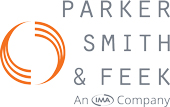IRS Released Additional §4980H Guidance
December 30, 2015
In mid-December, the Internal Revenue Service (IRS) released further guidance on a variety of Affordable Care Act (ACA) provisions that affect employer-sponsored group health plans via Notice 2015-87. The notice was provided in a Q&A format, with several of the responses clarifying §4980H (“employer mandate”) requirements, including guidance in regard to determining affordability, counting hours of service, and 2016 penalty (assessable payment) amounts.
Background
§4980H requires applicable large employers (ALEs) – those with 50 or more full-time equivalents (FTEs) – to offer coverage to full-time employees and their dependents that provides minimum value and is affordable. Employers who fail to do so may face potential penalties.
Applicable §4980H Penalties/Shared Assessments
An applicable large employer who fails to offer minimum essential coverage (MEC) to substantially all full-time employees and their dependents (children) faces a potential penalty under §4980H(a).
- For 2015, this amount is $2080 ($173.33/month) multiplied by the full-time employee count (minus the applicable waiver).
- For 2016, this amount is $2160 ($180/month) multiplied by the full-time employee count (minus the applicable waiver).
An applicable large employer who fails to offer coverage to full-time employees that provides minimum value and is affordable faces a potential penalty under §4980H(b).
- For 2015, this amount is $3120 ($260/month) multiplied by each full-time employee who enrolls through a public Exchange and qualifies for a tax subsidy.
- For 2016, this amount is $3240 ($270/month) multiplied by each full-time employee who enrolls through a public Exchange and qualifies for a tax subsidy.
Hours of Service
An “hour of service” is defined as each hour for which an employee is paid, or entitled to payment, for the performance of duties for the employer; and each hour for which an employee is paid, or entitled to payment, by the employer for a period of time during which no duties are performed due to vacation, holiday, illness, incapacity (including disability), layoff, jury duty, military duty, or leave of absence. This definition borrows heavily from existing DOL regulations, but this notice provided clarification on some aspects of this definition and how it applies for purposes of §4980H.
Guidance confirmed that an hour of service does not include an hour for which (i) an employee is paid during a period during which no duties are performed if such payment is made or due under workmen’s compensation, unemployment, or disability insurance laws; and (ii) payment is made solely to reimburse an employee for medical or medically related expenses.
However, periods during which no duties are performed but the employee is receiving payments due to short-term disability or long-term disability should count as hours of service so long as the employee remains employed, unless the payments are made from an arrangement to which the employer did not contribute directly or indirectly (e.g. employee paid 100% with after-tax contributions). Therefore, employers who allow employees to remain on the payroll for extended periods of time while being paid under a long-term disability policy will need to credit hours of service and may need to treat such individuals as full-time employees. And it was further clarified that there is no 501-hour limit on the hours of service required to be credited to an employee on account of any single continuous period during which the employee performs no duties.
Affordability Considerations
For purposes of an individual’s subsidy eligibility, coverage is “affordable” in 2016 if the employee’s required contribution for employee-only (single) coverage does not exceed 9.66% of the employee’s household income. However, for purposes of the employer safe harbors, the coverage is currently affordable if the employee’s required contribution for single coverage is less than 9.5% (of one of three different standards: the employee’s W-2 wages, the employee’s hourly rate of pay, or the federal poverty level [FPL]). In a change that has been expected, the IRS intends to issue amended regulations allowing the employer affordability safe harbor percentage (currently 9.5%) to adjust in accordance with the percentage used to determine affordability for individuals against household income (i.e. 9.66% for 2016).
When calculating the employee contribution amount, the employer may need to consider more than just a portion of the medical insurance premium. Employer contributions toward things such as an HRA, Section 125 plan, and even opt-out payments may affect the amount that is ultimately taken into account for purposes of determining affordability. See further details on such contributions below.
HRAs
As previously provided, the guidance confirmed that amounts made available for the current plan year under an HRA that an employee may use (i) to pay premiums for an eligible employer-sponsored plan, or (ii) for premiums and for cost-sharing or other health benefits not covered by the plan, will reduce the employee’s contribution amount so long as the HRA is integrated with a group health plan so that it meets health care reform requirements. For reporting purposes (Line 15 of Form 1095-C), the HRA contribution is treated as made ratably for each month of the period to which it relates.
NOTE – HRA amounts that can be used only for cost-sharing or other health benefits not covered by the plan (and not for premiums) do not count toward affordability, but rather are considered for purposes of determining minimum value.
Flex Credits (Section 125 Plan)
Under a Section 125 plan, some employers provide a certain dollar amount as flex credits that may be used toward a variety of different benefit options. Whether such amounts may be counted toward the employee’s required contribution depends upon whether they meet the definition of a health flex contribution. Amounts that are:
- non-cashable;
- may be used to purchase minimum essential coverage (MEC); and
- are limited to payment of medical care as defined under Section 213(d) are considered a “health flex contribution” and may be counted toward the employee’s required contribution (and thus reduce the dollar amount of that required contribution).
On the other hand, flex contributions that are cashable and/or that may be used toward non-medical benefits may not be considered. For reporting purposes (Line 15 of Form 1095-C), the health flex contribution is treated as made ratably for each month of the period to which it relates.
Transition relief – for purposes of §4980H(b) penalties for plan years beginning prior to January 1, 2017, flex contributions (even those that do meet the definition of a health flex contribution) will generally be treated as reducing the amount of an employee’s required contribution, unless the arrangement is adopted after December 16, 2015 or the amount of the flex contribution is substantially increased after December 16, 2015. During this transition relief period, employers may report by reducing the amount of the employee contribution, including the non-health flex contributions; but employers are encouraged not to do so because this may affect whether an employee is eligible for a subsidy. Rather, the IRS would prefer that employers report on Line 15 accurately (not according to the transition relief), and then reconciliation would be allowed and potential §4980H(b) penalties forgiven if applicable.
Opt-Out Payments
Previous guidance indicated that cash opt-outs (or cash in lieu of benefits) should be included when determining affordability for purposes of the individual mandate, but there was not any guidance that specifically addressed opt-out payments for purposes of subsidy eligibility or the employer mandate under §4980H. As many expected, the IRS promised that additional regulations are coming soon that are likely to require similar treatment for purposes of determining affordability for subsidy eligibility and the employer mandate penalties under §4980H(b).
It appears that at least for unconditional opt-outs (payment conditioned solely on an employee waiving coverage under an employer’s health plan), the cash will need to be considered for purposes of affordability. For example, when the employee cost for health coverage is $125 per month, but there is an unconditional opt-out payment of $75 per month if coverage is waived, the employee contribution for affordability purposes is $200 ($125 + $75). If the payment is available to any employee who waives coverage, it should be used in calculating affordability for all eligible employees.
On the other hand, the IRS indicated that placing conditions on the cash opt-out, such as proof of other group health coverage, may allow the opt-out not to be considered. This makes sense because if the opt-out payment is limited only to employees who show proof of other group insurance, there is little or no 4980H(b) risk to the employer anyway because the opt-out payment would be provided only to employees who have other group coverage (and are therefore ineligible for subsidies through a public Exchange).
Until further guidance is provided, employers are not required to increase the amount of an employee’s required contribution by the amount of an opt-out payment, but individuals may treat it as increasing employee contributions for purposes of subsidy eligibility and the individual mandate.
Employers who choose to report a lower employee contribution amount due to transition relief for flex credits or opt-out payments as discussed above (rather than reporting the higher amount) are encouraged to notify employees that the employee may obtain accurate information about their required contribution using the employer contact telephone number provided to the employee on Form 1095-C. If the gross contribution (adding back in flex credits or opt-out payments) is unaffordable, but the employee did not qualify for a tax credit because the employer is reporting a lower (“affordable”) contribution under the transition relief, then the employee can claim a credit based on the actual contribution on Form 8692 – Premium Tax Credit, which is filed with the employee’s annual income tax return.
Affordability Considerations
The notice provided some much-needed clarification and confirmation in regard to §4980H, especially in regard to affordability and how to handle the reporting on Line 15 of Form 1095-C, at least for now. With §4980H penalty amounts confirmed for 2016, it is important for employers to understand how various employer contributions will affect affordability and to plan accordingly.
As always, should you have any questions, please contact your Parker, Smith & Feek Benefits Team.
While every effort has been taken in compiling this information to ensure that its contents are totally accurate, neither the publisher nor the author can accept liability for any inaccuracies or changed circumstances of any information herein or for the consequences of any reliance placed upon it. This publication is distributed on the understanding that the publisher is not engaged in rendering legal, accounting or other professional advice or services. Readers should always seek professional advice before entering into any commitments.
The views and opinions expressed within are those of the author(s) and do not necessarily reflect the official policy or position of Parker, Smith & Feek. While every effort has been taken in compiling this information to ensure that its contents are totally accurate, neither the publisher nor the author can accept liability for any inaccuracies or changed circumstances of any information herein or for the consequences of any reliance placed upon it.



